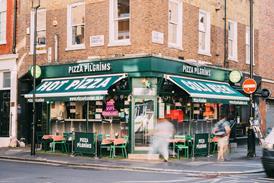- News
- Finance
- Opinion
- Analysis & Insight
 Emotional intelligence: The new frontier in guest experiences
Emotional intelligence: The new frontier in guest experiences Bright spots in a difficult market: how QSR operators are winning in 2025
Bright spots in a difficult market: how QSR operators are winning in 2025 The chicken kings: How Boparan flew under the radar to create one of the UK’s fastest growing brands
The chicken kings: How Boparan flew under the radar to create one of the UK’s fastest growing brands Why Dishoom might be the most exciting hospitality investment of the decade
Why Dishoom might be the most exciting hospitality investment of the decade
- Interviews
- Innovation
- People
- Events
- Register
Commercial property boost unsustainable
Alternatively SUBSCRIBE for unrestricted access to all content. Contact us for more information

























